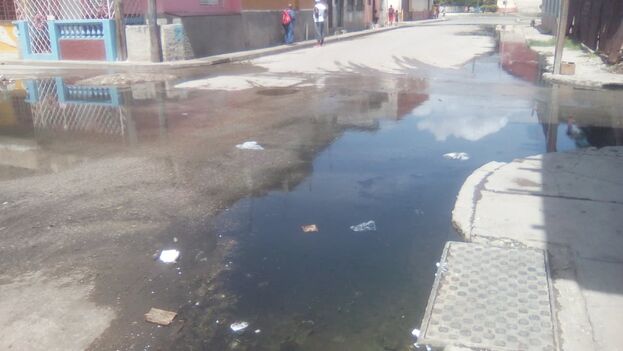
![]() 14ymedio, Alberto Hernández, Santiago de Cuba, 30 May 2021 — Santiago de Cuba, known for its carnivals, its suffocating heat and the hospitality of its people, today presents a bleak panorama. The city is depressed by hunger caused by the shortages of all kinds of food, the diseases that are becoming more frequent every day due to the lack of medicines which have been missing for months, and now, as if that were not enough, the accumulation of all kinds of waste in its streets.
14ymedio, Alberto Hernández, Santiago de Cuba, 30 May 2021 — Santiago de Cuba, known for its carnivals, its suffocating heat and the hospitality of its people, today presents a bleak panorama. The city is depressed by hunger caused by the shortages of all kinds of food, the diseases that are becoming more frequent every day due to the lack of medicines which have been missing for months, and now, as if that were not enough, the accumulation of all kinds of waste in its streets.
The inhabitants of the city wonder what happened to the sound, sometimes annoying, of the bell that announced the arrival of the garbage trucks, after which everyone rushed to put out the waste stored in their houses. The trucks just vanished, as if by magic. Now, the waste is simply stuffed in sacks and dumped in the first corner, or hung from any tree, forming what is known as micro-dumps. The containers that were once, long ago, distributed throughout the city, simply disappeared and are now an endangered species.
Given the worrying situation and the daily criticism of the population, the Government, advised by the directors of the public company Servicios Comunales, which is in charge of cleaning the city, explain that the main problem is the breakdown of the waste collection trucks (together with the lack of fuel, tires, batteries, various spare parts and endless excuses). But, how is it possible that individuals keep their vehicles – dating from the 40s or 50s – in good condition and state companies, with all the tight control of resources, cannot guarantee that a fleet of a few dozen trucks will remain in operation? When it is wanted, it is resolved, and when it is not, a good justification is sought, as the saying goes.
Comunales, taking the situation into account, has supposedly hired some 325 animal-drawn carts to sanitize the city and thus compensate for the lack of trucks. I say supposedly because, if those 325 wagons were working every day, we would not have that chaotic panorama now presenting in the city.

To top it all, there are now record levels of Covid-19 cases in the city, and hundreds of micro-dumps on any corner complicate the situation. The coronavirus has joined other pests that plague the Santiago population and that are closely related to poor hygiene, such as scabies, lice, and dengue fever, the latter transmitted by the Aedes aegypti mosquito that has as a breeding ground the many open air waste dump.
In addition, the sewers are clogged and, instead of evacuating wastewater, they expel it to the public thoroughfare, as is frequently observed in the lowest points of Santiago de Cuba.
Ignoring hygienic risks, more and more people “dive” into landfills looking for any of the sorts of things that will help them survive. Driven by hunger and despair, many inhabitants even take refuge in garbage dumps.
The disastrous hygienic-sanitary situation that Santiago de Cuba is going through reflects the inability of the authorities to solve the basic problems of Cuba’s second city. The capital of the East is today the shadow of what it once was.
____________
COLLABORATE WITH OUR WORK: The 14ymedio team is committed to practicing serious journalism that reflects Cuba’s reality in all its depth. Thank you for joining us on this long journey. We invite you to continue supporting us by becoming a member of 14ymedio now. Together we can continue transforming journalism in Cuba.
